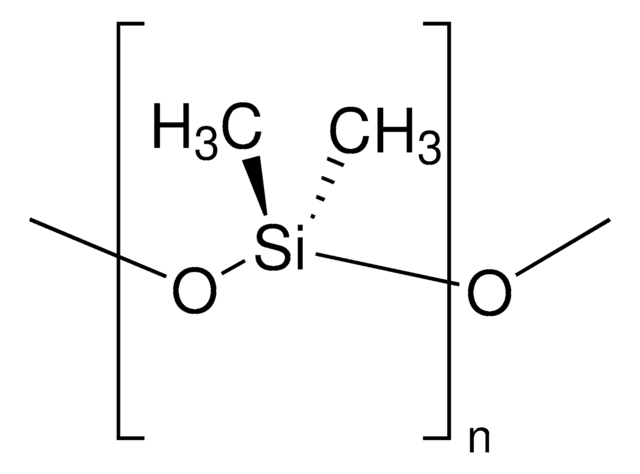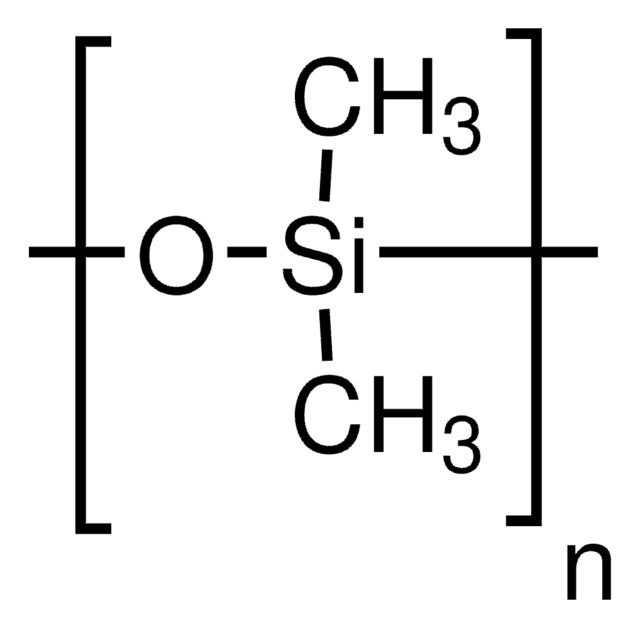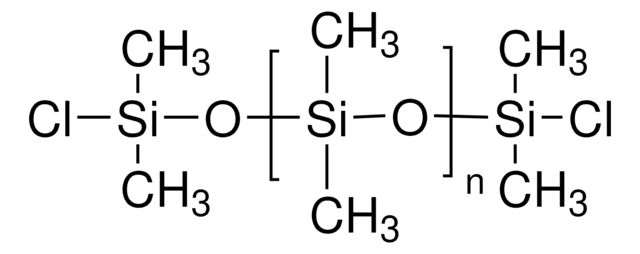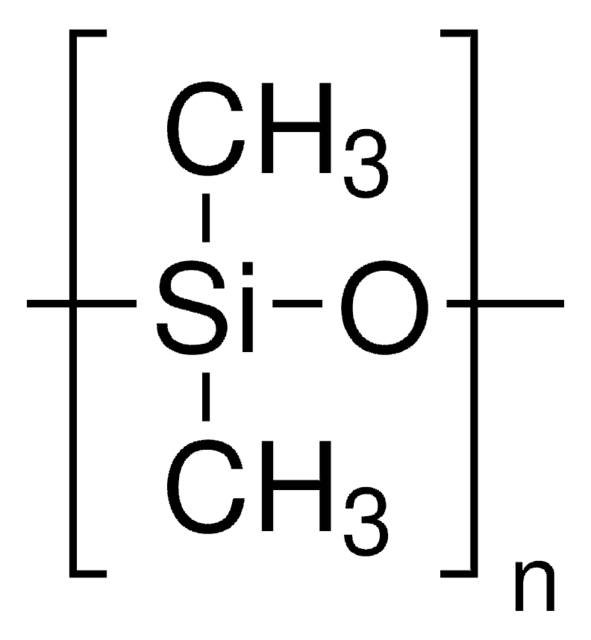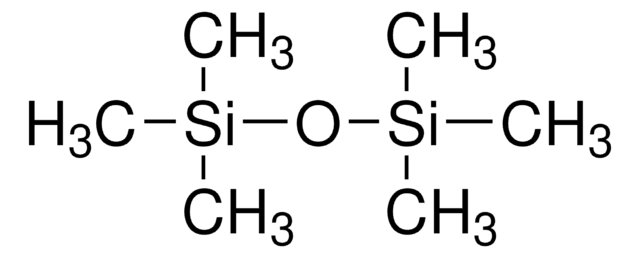DMPS2C
Dimethylpolysiloxane
viscosity 200 cSt (25 °C)(lit.)
Synonym(s):
Polydimethylsiloxane
About This Item
Recommended Products
form
liquid
mol wt
~9,430
viscosity
200 cSt(25 °C)(lit.)
InChI
1S/C2H6OSi/c1-4(2)3/h1-2H3
InChI key
SEUDSDUUJXTXSV-UHFFFAOYSA-N
Looking for similar products? Visit Product Comparison Guide
Application
Storage Class
10 - Combustible liquids
wgk_germany
WGK 2
flash_point_f
609.8 °F - closed cup
flash_point_c
321 °C - closed cup
ppe
Eyeshields, Gloves, multi-purpose combination respirator cartridge (US)
Certificates of Analysis (COA)
Search for Certificates of Analysis (COA) by entering the products Lot/Batch Number. Lot and Batch Numbers can be found on a product’s label following the words ‘Lot’ or ‘Batch’.
Already Own This Product?
Find documentation for the products that you have recently purchased in the Document Library.
Customers Also Viewed
Our team of scientists has experience in all areas of research including Life Science, Material Science, Chemical Synthesis, Chromatography, Analytical and many others.
Contact Technical Service